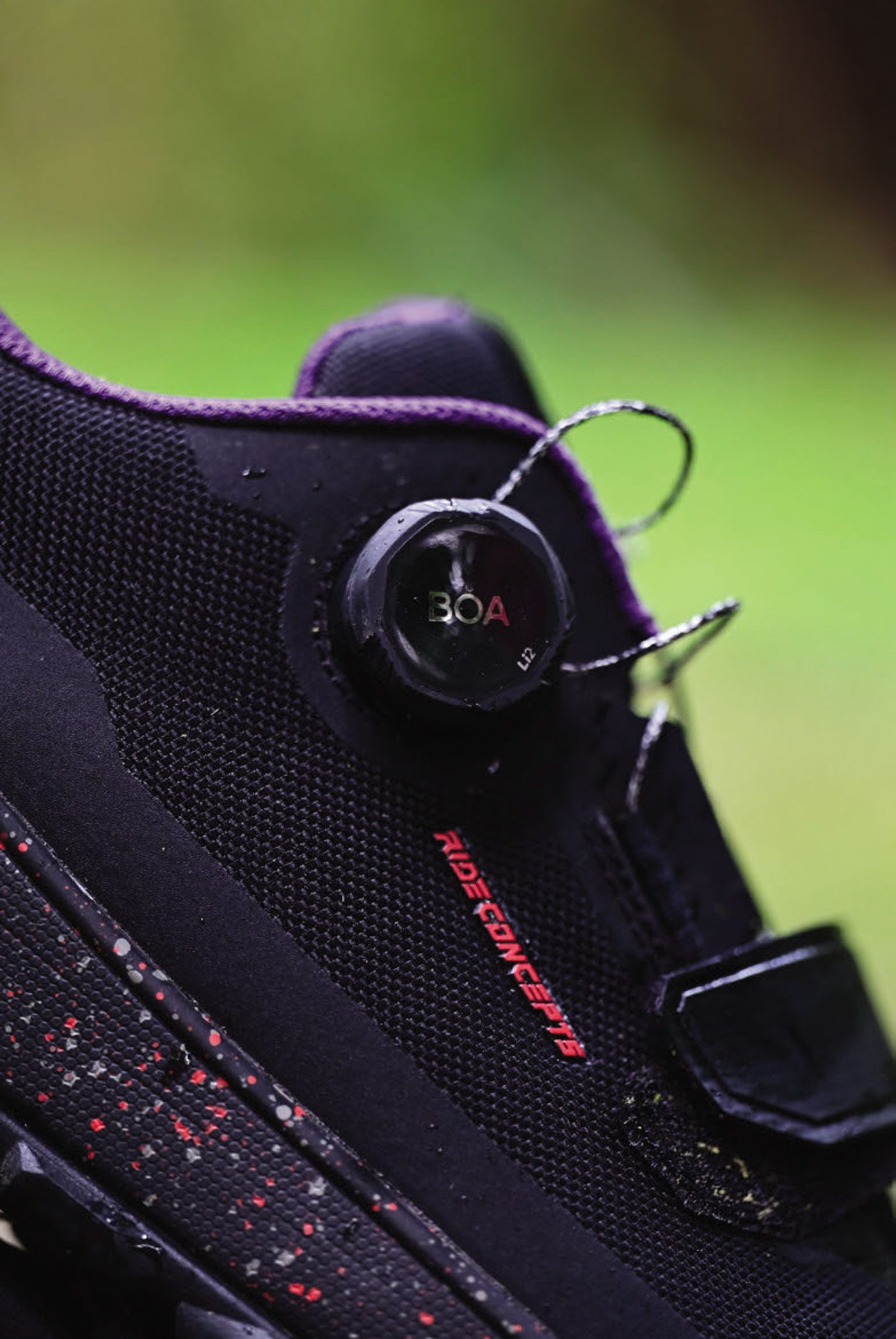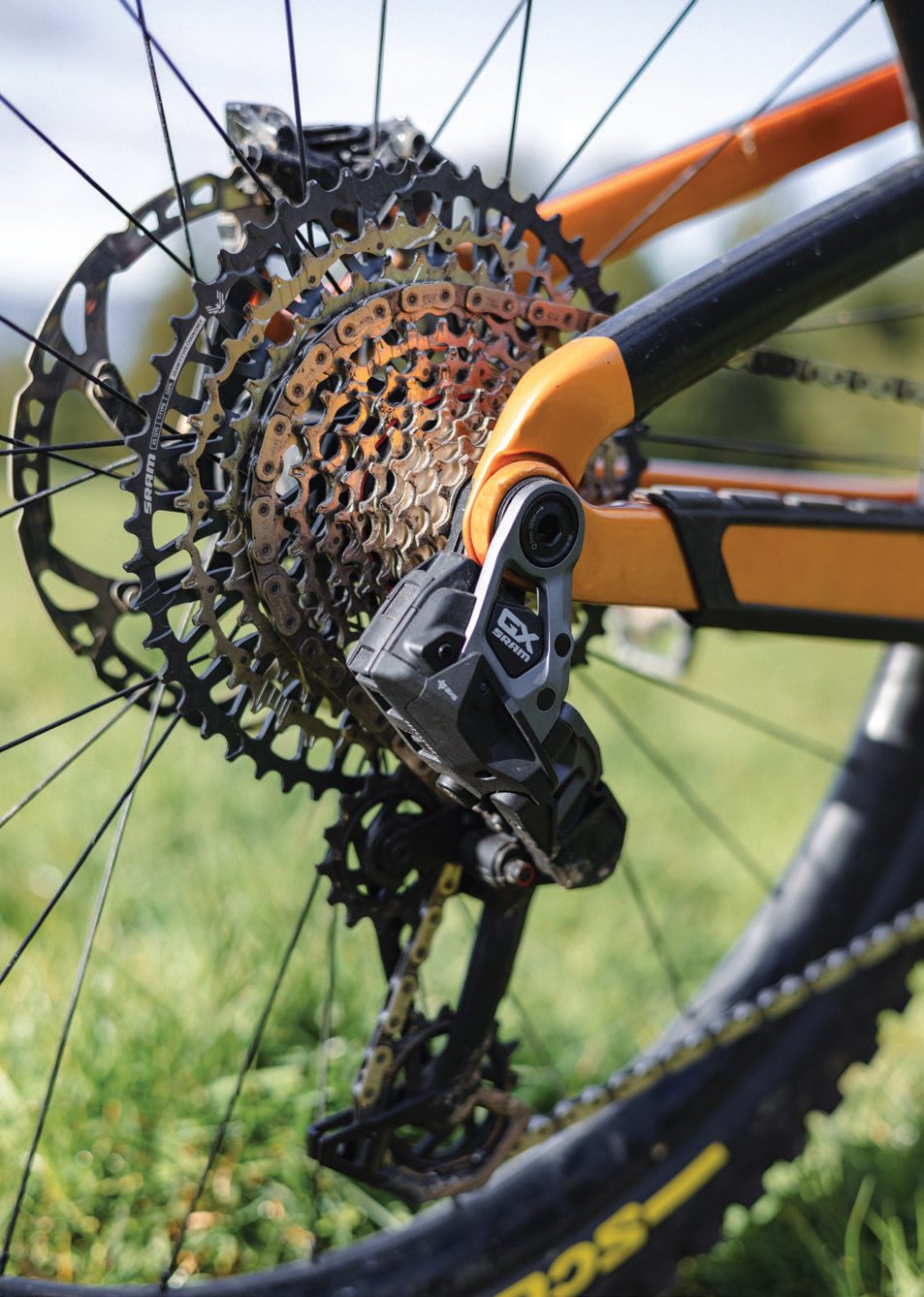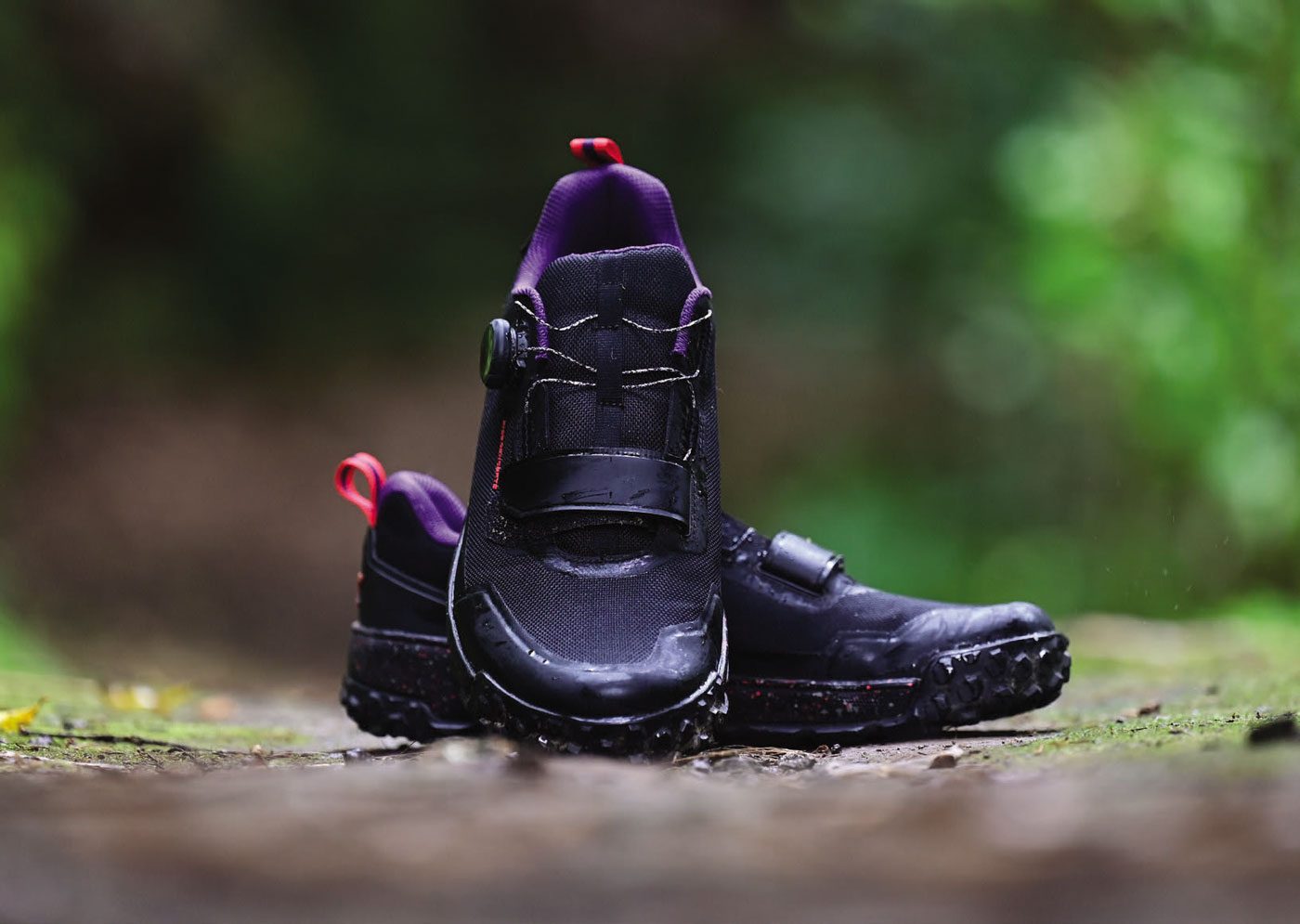First Impressions: SRAM GX Transmission
WORDS: LESTER PERRY
DISTRIBUTOR: WORRALLS
RRP: $2,170
“I was eager to pull out the UDH hanger from my battle-scarred frame and slide on a new Transmission…”
After hearing whispers that a more affordable GX groupset may be in the pipeline, I was eager to pull out the UDH hanger from my battle-scarred frame and slide on a new Transmission.
SRAM has launched the GX series – continuing their ‘All Day’ theme with a groupset designed for all-mountain, all-day missions, at a far more affordable price.
What you find on the GX system is largely the same as the higher-end Transmissions released earlier this year. There are some subtle differences which are visually noticeable from those higher-end units. In particular, the battery is hidden away in what I’ll refer to as the “Derailleur Garage” – keeping it out of harm’s way – essentially inside the derailleur. Replaceable, protective skid plates have been added, and a two-piece outer link. It also features a tool-free cage assembly – so it’s both removable and upgradeable, should you want to do so. A steel inner cage replaces the carbon of its higher-end brethren. Like the GX AXS of old, it’s been built for riders of the real world.
A couple of weeks before the launch date, a nice cardboard cube arrived on the courier. I quickly watched an install video, and it was game on. It’s been a long time since I’ve installed anything on my bike that required a proper read of the instructions or, in this case, a video. SRAM does a killer job of stepping through the installation process: whoa-to-go in around 30 minutes. I’d imagine after another couple of goes, a whole Transmission could be installed in about 15 – 20 minutes, maybe even quicker. It really is pretty simple provided you’ve watched the video. My only install hiccup was my inability to pair the system to my phone (no doubt user error, but I’ll figure that out soon) as well as the compatibility of the shifter clamp with my brakes, which aren’t SRAM. It took a bit of jimmying, but I managed to get the two to work together – it did mean that I couldn’t take full advantage of the adjustment that should have been available. Fortunately, the one spot I could get the shifter to sit was just right for me. I see in their documentation a different shifter pod mount is available and this would have completely solved my issue.

Te Miro MTB Park, just out the back of Cambridge, was my first testing ground. For the uninitiated, the trails are reasonably varied but the general theme is clay and native roots, dispersed amongst meandering climbs with the odd pinch or crux move requiring low cadence torque and fast, precise shifting to get the most out of your bike if speed is your aim. Coming off the back of a few days of intermittent rain, I wasn’t expecting much aside from mud and muck – perfect for bedding in a fresh groupset.
Leaving the car park, I snapped through the gears and made sure everything was still as it should be. I shifted through the cassette and took a couple of looks back just to be sure it had shifted, as it was so smooth and quiet, just a small ‘zit’ noise and a rolling increase of resistance at the pedals. I spun my way up the Easy As climb, taking the harder, steeper lines where possible, purposely shifting at the wrong time and under full power. Thoroughly impressed at how positive the shifting feel and accuracy was I pressed on, thinking to myself, ‘sure, it’s good now, but I bet once there’s some mud in the system it will be just like everything else’.
‘Easy As’ caps out and links into the Miro climb; its mellow gradients are broken up with some proper NZ native roots. Regular traffic polishes off the bark and pulls slimy dirt up onto them. You have to have your wits about you to keep the power down and maintain forward momentum, a situation where a mis-shift or slipped gear will likely see you stalled out or on the floor. Again, I was impressed by how accurate the shift was, with no slipping or mis-shifts, regardless of how many shifts under full power, and regardless of cadence.
Climbing to the top of the native bush, Miro finished, and I dropped into ‘Phil’s Gold’ – a test of a rider’s fitness, line choice and cornering ability; no steeps, but lots of corners, and a fair smattering of slimy roots. Eager to make this thing mis-shift, I again banged through gears, up and down the cassette, forcing shifts out of near-dead-stop corners. Nought. Nothing. Nada. I couldn’t get it to fault. I wondered whether I’d be so positive after a few months aboard the groupset – would the crispness remain after riding the second half of winter on it?
Another climb up Miro and a lap down ‘Native DH’ and my time was up for the day. I was only one proper ride in but so far, so good. I found myself shifting way more than I would aboard my previous group, and shifting from dead stops, under full power, and over chunky surfaces. I’d be concerned about heading over the bars and losing teeth on any of my other setups with that sort of carry-on.
SRAM made some pretty bold claims about their remapped Cassette, new X-sync technology (i.e. redesigned shifting ramps) and use of their flat-top chain to make it all work: ‘Creating seamless shifts even during your hardest power output.’ I’ve gotta say, there’s something in this combination of marketing speak and fancy nomenclature that really makes this thing shift impressively under power – something other brands claimed they’d done years ago – but SRAM has taken it up a level. I’ll be very interested if it continues to perform to this level, even after many km’s and battery charges.
So far, I have three main concerns. One, will the shifting with buttons mean I lose my right thumb muscle tone, rendering it useless when I go back to a cable system? Two, will I smash off the low-hanging shifter Pod? And three, will I want to give this groupset back after the next few months of testing is over?
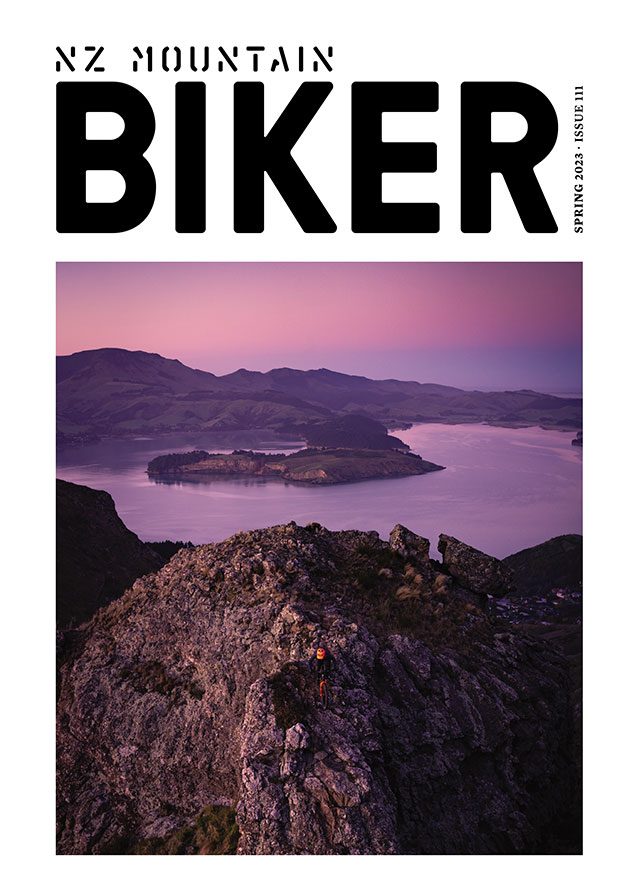
Red tape runs down volunteer enthusiasm
Words: Meagan Robertson
Photography: Cameron Mackenzie & Henry Jaine
As a longtime supporter of volunteer trail builders, Trail Fund NZ increased its focus on advocacy four years ago. The catalyst was when it came to light that the classification of bikes as ‘vehicles’, on public conservation land, was causing significant delays to projects around the country and meant that iconic trails – including several Great Rides – did not comply. Since then, it’s been a slow ride towards resolving the issue, and several passionate volunteers are feeling defeated.
“Old Ghost Road, Great Lake Trail, Paparoa, Timber Trail… these are only a few of the country’s Great Rides that have sections that don’t comply with the local Conservation Management Strategy,” explains Trail Fund Advocacy Manager, Jimmy Young. “It is understood that numerous Great Rides have sections that don’t comply, and dozens of other iconic mountain bike trails are also caught in the crosshairs.”
The knot at the bottom of these cross hairs appears to be the Conservation Act 1987, under which bicycles are considered vehicles. However, most (if not all) of these trails have been built since then, with DOC permission an integral part of the planning and execution processes.
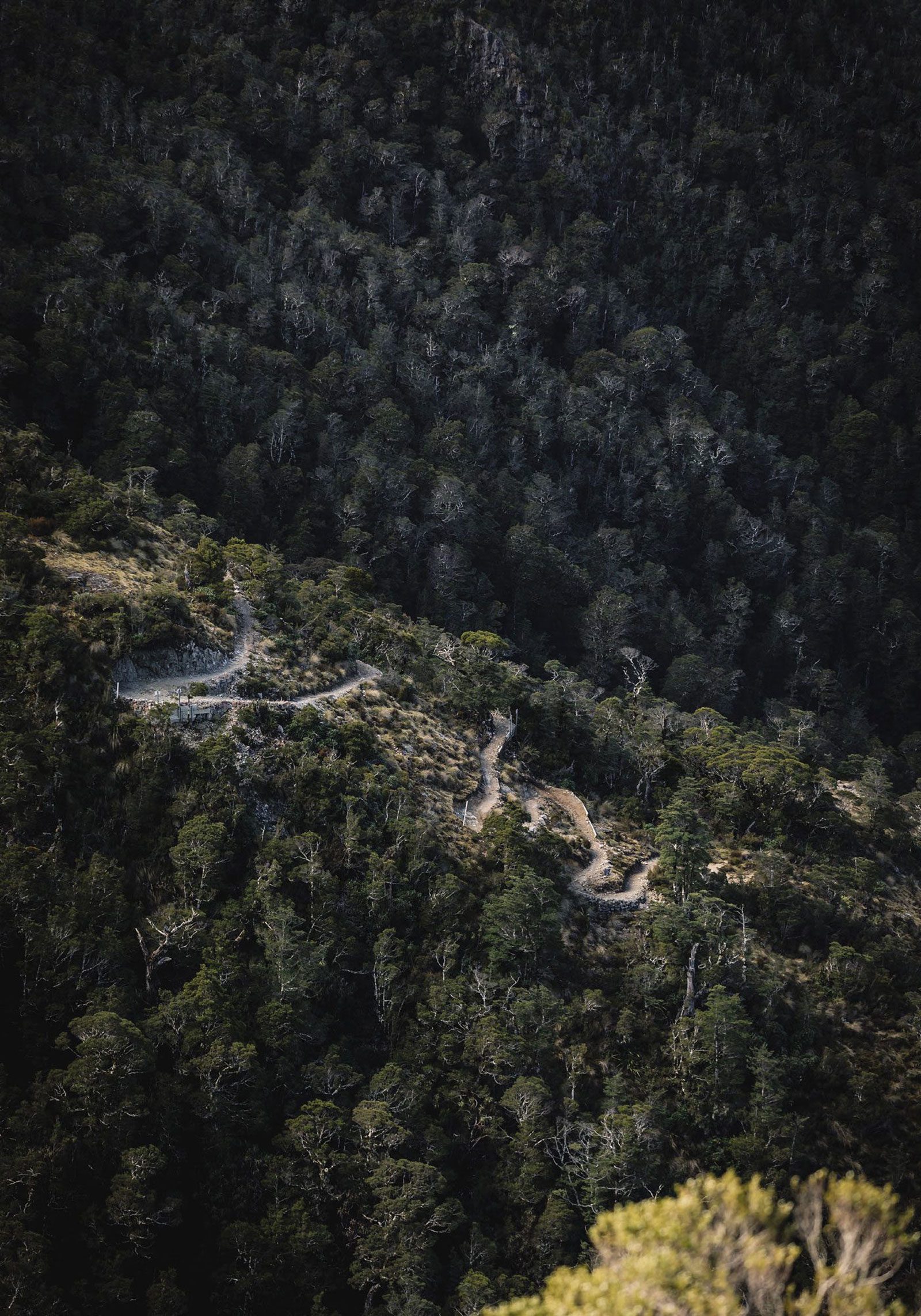
What changed?
At some point around 2018, Department of Conservation (DOC) staff started taking a different approach towards applications for cycle trails on department land. According to DOC, it is due to increased interest in biking around the country, but cycle trail managers and administrators say there appears to have been a complete reinterpretation of the 2005 legislation that overlaid the conservation management strategies.
“The ‘new’ approach was that a region’s Conservation Management Strategy (CMS) needed to identify the locations and use of vehicles (bikes in our case) and other forms of transport on land owned or administered by the department,” explains Jimmy. “However, DOC now wanted the locations of current and proposed cycle trails to be listed in the strategies before an application could be made to build them.”
Basically, bikes can only be used on trails explicitly specified (in a list) in the CMS, as opposed to assessing bikes on trails through an ‘effects–based approach’, which is the approach Trail Fund and other bike organisations are suggesting.
While this might not be an issue if the CMS’ were reviewed every few years, this is far from the case in New Zealand. CMS’ are only meant to be reviewed every 10 years and, in reality, seven of the 16 are current, two are under review, one is under development and six are overdue for review. Some are more than 20 years old.
Taupō trails on trial
Bike Taupō, which has built tracks and provided community representation for all Taupō cyclists since 2002, was one of the first clubs to face DOC’s ‘new’ interpretation of the Act. Chairperson, Pete Masters, and committee member, Rowan Sapsford, reached out to Trail Fund, and Jimmy has been working with them and other groups since then.
“We have more than 200kms of trails that we manage and approximately 160kms of these are on public conservation land,” explains Rowan. “A number of them were purpose–built by Bike Taupo, including the Great Lake Trails and the Rotary Ride, which were developed back in 2003.
“Approximately four years ago we were told that these trails were ultra vires (which means an act that lies beyond the authority of a corporation to perform), as they were not scheduled in the local CMS, despite all trails being developed with signed management agreements with the Department.”
Rowan says this has been extremely problematic for several trails on public conservation land managed by Bike Taupō, as they have not been able to renew management agreements or access funding – despite support from the local DOC office.
This prompted Bike Taupō to start working with Trail Fund and other trail groups around the country to request that DOC move away from the scheduling approach. Four year later, the discussion continues.
“We believe an effects–based approach, where trails are assessed against the values at place rather than just being written off because bikes will be ridden on them, should be adopted,” says Rowan.
The club felt like maybe it was making headway when the Department recently agreed that a new cycle trail within the Taupo Tongariro Conservancy, which is not scheduled in the CMS, will be able to proceed.
“While this is great news for the club and the community on this one trail, it’s not reassuring overall, as we’ve been told by the Department that this will not apply to any other trails in the area,” says Pete. “This makes no sense, and feels like a cop out if the Department planners are going to take a consistent approach.”
With management agreements for some of the club’s trails up for renewal soon, Bike Taupo says it will be a real test of the Department’s approach.
“We have awesome support from the local DOC team, but I guess we will have to wait and see if the Department refuses to renew our management agreements for biking trails which have been in place for 20 years, such as the Rotary Ride between Taupō and Huka falls.”

Kaihu cut short?
On 10 June, 150 local cyclists were thrilled to cross the new Ahikiwi Bridge at the official opening of stage one of the Kaihu Valley Trail, a 30–kilometre route between Dargaville and Kaihu comprising two off–road trail sections currently linked by low–volume roads.
Once complete, the Kaihu Valley Trail in Northland is intended to allow cyclists and walkers to wind their way through forest and farmland, and along the Kaihu River from Dargaville to Donnelly’s Crossing – a distance of some 45km. It will largely follow the historic rail line built in 1896 to service the kauri industry. The top third of this old rail corridor is stewardship land administered by DOC.
However, excitement was muted due to news received just weeks before that the DOC concession for Stage 2 of the trail – which would take riders off the narrow state highway and reduce climbing – was declined.
In late 2022, DOC staff were asked if there were any issues related to the concession. They advised no, then took until May 2023 to decline the application.
Local Steve Gwilliam from the project team says the concession application was made in mid–2021, and the team reached out to Trail Fund for support in early 2023, in desperation.
“They declined our application despite granting a concession a year before, for the bridges and trail in Kaiwaka township (50km away), which specifically states ‘walking and cycling’,” says Steve. “This should have set a precedent or provided exceptional circumstances for consideration.
“It’s disappointing that it took 20 months for DOC to respond to the project team and advise the application for cycling was inconsistent with the General Policy Statement (GPS) and CMS,” says Steve. “Even more disappointing is that the corridor, which has little conservation value, is farmed (stock, vehicles etc) by adjoining farmers ‘without’ any concession, which is in complete breach of the GPS and CMS. In our view, it’s likely a cycle way would offer more protection to the remaining historic rail corridor and features, than the current illegal farming operations.”
Ironically, Northland MP, Willow–Jean Prime, who is also Conservation Minister, joined Kaipara District Council deputy mayor, Jonathan Larsen, in cutting the ribbon at a June 10 ceremony hosted by Ahikiwi Marae in Kaihu.
“This is an investment in the region,” said Prime. “It is good for locals and their wellbeing and also for visitors who come to the region.”
The track will form part of existing and proposed trails traversing the whole Northland region, including the Kauri Coast Cycleway Heartland Ride, which runs southward from Rawene on the Hokianga Harbour – and which itself links to the Twin Coast Cycle Trail from the Bay of Islands to Hokianga, one of the 23 Great Rides of New Zealand.
The trail has received significant investment from various sources, including $4 million from the Infrastructure Reference Group, a $600,000 contribution from Waka Kotahi and funding through the government’s COVID–19 Response and Recovery Fund from MBIE.
Unfortunately, the MBIE funding had a deadline and, due to the delay on DOC’s part, Steve says the opportunity to build the section of trail that had the most benefit to riders – by taking them off the narrow state highway and public roads with 100km/hr traffic and no shoulders, taking away substantial climbs and travelling through some iconic northland topography – has now been missed.
The concession application has been amended to be ‘walking–only’ in hopes it might get traction, but has heard nothing since.
“It’s pretty demoralising to put in so much effort and just feel like you get nowhere, despite everyone being seemingly on board in public,” says Steve.
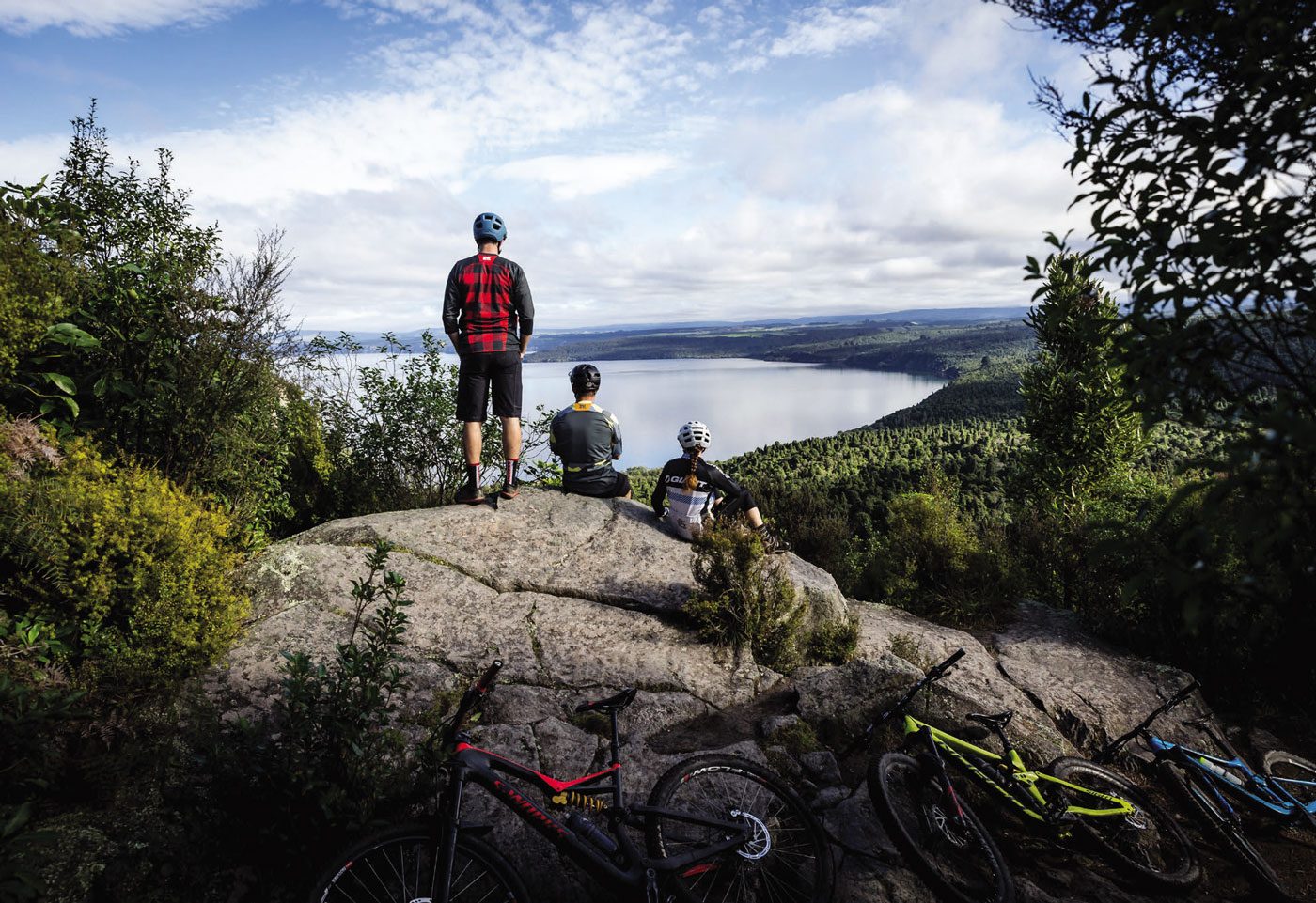
Under pressure
Despite the frustrations, many bike organisations are loathe to publicly criticise local departments for fear it could make things worse, or because there’s generally a good relationship locally. However, one region’s results suggest public pressure could do the trick.
This is what happened in Otago, where the department – under pressure to consider many new cycle trails, including the Kawarau Gorge link between Queenstown and Cromwell funded by the Government as part of a grand cycleway from Central Otago to Dunedin – was forced to take action.
DOC launched a partial review of the 2016 Otago CMS, which attracted almost 1750 public submissions in 2019, and a decision listing 112 possible cycle trail sites was issued in July 2022.
However, the proposals still needed to go through an assessment process, including engagement with Ngāi Tahu and consultation with the Otago Conservation Board, and organisations spent thousands of hours covering every piece of land where they might want to develop a biking track.
“While it’s great that a partial review means there’s the possibility of new cycle trails that are in line with the CMS, retaining this approach isn’t the answer,” says Jimmy. “What we need is an effective mechanism for assessing tracks on their merits and impacts – not one approach for walking tracks and another for cycling.”
Looking ahead
Despite little progress in three years, Trail Fund and the organisations it’s been working with continue to strive for a solution.
“We really want to work with DOC on this for the cycling stakeholders and provide greater access opportunities for recreation,” says Jimmy. “We are keen to be part of the solution and assist DOC to come up with a pragmatic solution that can solve the issue permanently.
“We all want a result that legitimises the activity of cycling on public conservation land and values the time and resources that committed volunteers put into trails around the country, week after week.”


Musings
Words and illustration by Gaz Sullivan
“I hit ‘Buy Now’ and moved into the post-purchase second-guessing period…”
A couple of weeks ago, the stars aligned, and I added two new bikes to the stable at once. By a combination of circumstances that are best left unexplored, I stepped up to a brand new trail bike. Part of that exciting transaction was keeping all of my previous trail bike, except the frame.
As many of you will understand, there are already more bikes in my shed than I really have time to use. Each is suited to a particular purpose, and there is surprisingly little redundancy across the fleet. Some of them get out several times a week, some of them might hang there for months, waiting for the day when what they are useful for is what I am going to have a crack at.
So, with that in mind, a sensible person would turn the pile of pretty nice parts into cash via some sort of online marketplace.
That is what I set out to do. Honest.
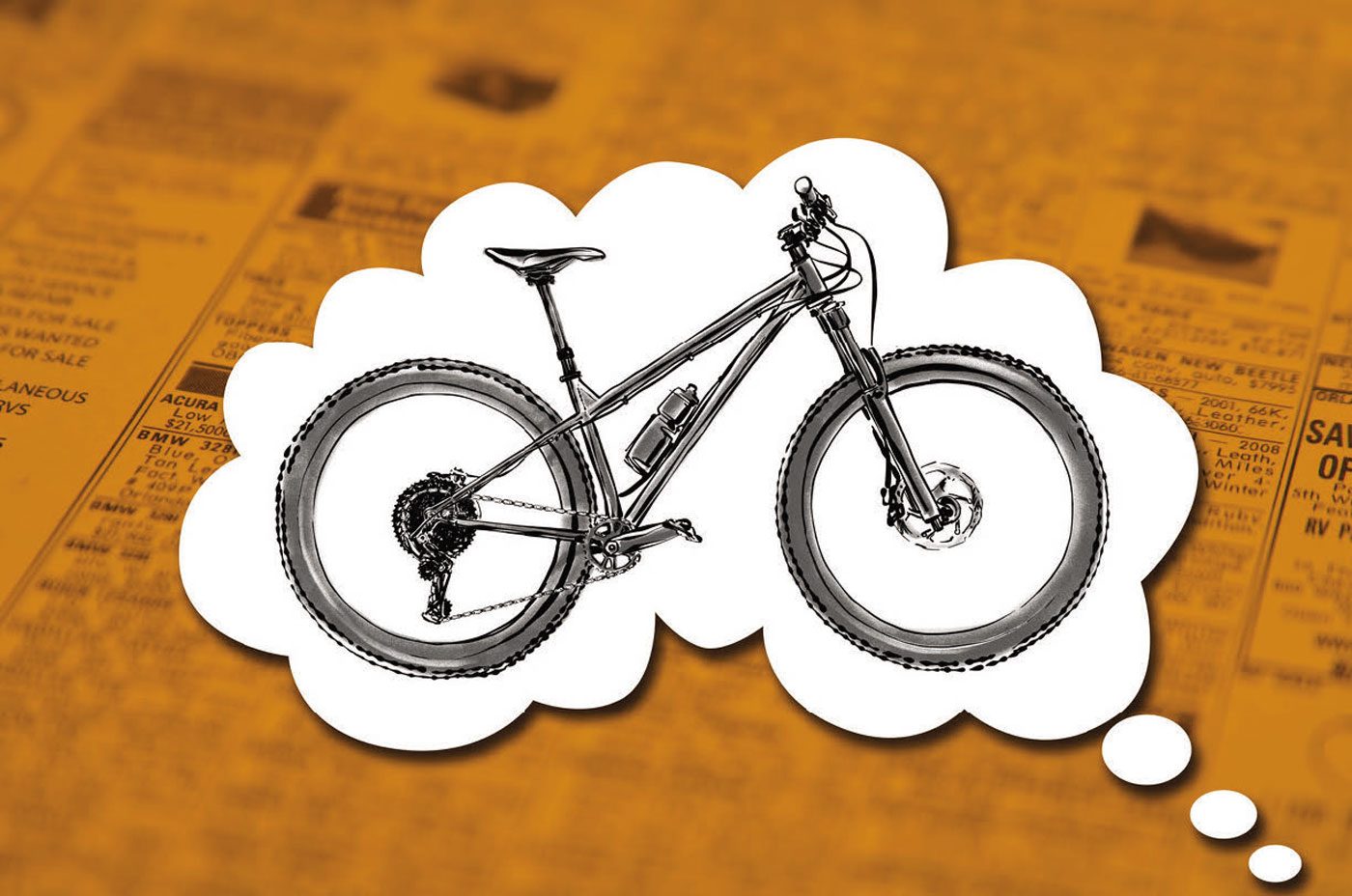
My first step was to browse around, trying to establish a value for all this stuff.
There were similar parts with prices ranging from depressingly low to delusionally high.
And there were a lot of things available. I started thinking about the sheer tedium of listing everything, communicating with tyre-kickers, and then trying to send a pair of wheels to Invercargill.
Wondering if anybody would want the entire pile, and because I have a short attention span, I wandered over to the ‘frames’ department on the off chance there might be some path to follow there.
The very first thing I saw was a brand-new hardtail, my size, and completely compatible with everything in my parts trove except the bottom bracket. Plus, it was steel, which made it cool and very desirable.
A short but fierce mental argument followed. I bet you have endured similar battles. One part of my brain was of the opinion that a seat tube diameter matching my functional-but-virtually-worthless dropper post was a sign from heaven, and I should immediately buy the frame before anybody else did. Another part kept chiming in with the various things I could do with my winnings if I carried on with the original plan and ditched the parts. The first part came back with the very sound reasoning that if I acquired the frame, built it up, and then fell on hard times, a complete bike would be easier to sell than a pile of parts, and there would be nothing left over except a rear shock. Which would be left over anyway, and can be sold. It might even pay for the required bottom bracket.
The ‘buy the frame’ faction had the upper hand, but the other side somewhat lamely countered with a comment about the number of bikes already in the shed, pointing out how rarely some of them escape into the wild.
That was fairly easy to ignore – we are well-practiced in doing exactly that.
The final straw was somebody asking a question about the frame while I was looking at it.
I never found out what the question was, and didn’t wait for the answer. I hit ‘Buy Now’ and moved into the post-purchase second-guessing period.
The excitement of the new possession was far more powerful than the slowly fading doubts, and soon enough the frame turned up and the parts were bolted on.
The bike came out even better than Mr Positive Brain imagined, and the naysaying lame-o in the negative has not been heard of much since, except for a brief appearance the first time we took the new beast into the trails.
A sort of ‘see? I told you this was a dumb idea’ popped out on the first bit of fast, choppy trail, as my body tried to adjust to life with no rear suspension. How we rode places like Moab, Utah on a rigid hardtail is beyond my ability to recollect, but we did, and I have doggedly continued to try to do so.
I am not really getting any closer to floating over the ground like I should, and rides on the new dually are certainly much easier on the joints and fillings. But me and my mental go-for-it are still very happy we went for it.
Nothing like a different bike to make a ride fresh and new.

Ride Concepts Tallac Clip BOA Shoes
WORDS: LANCE PILBROW
DISTRIBUTOR: SOLIS NZ
RRP: $349
“If I was thinking about a ride that might have significant hike-a-bike, these would be worth considering for that alone.”
I’m the kind of guy who swings both ways when it comes to riding clips and flats. To be honest, I’m not really sure which one is my preference; I alternate between them both so much. Last year, I was able to review the RC Shoes Tallac Flat pedal shoe and it quickly became my favourite with its generous padding around the cuff, comfy D30 sole, and general good looks. It just ticked all the boxes and seemed to match my foot just right for all-day comfort.
So, when the new Tallac Clip shoe came along, this seemed like a home run. Same shoe, just in clip form. Right? Well, actually, no. But we’ll get to that later.
The Tallac Clip I received is the BOA version – yep, it’s got one of those twisty dials that magically does up the laces and, with a flick and a click, it pops up and everything releases. I’ve had a few of these and, aside from looking a little more space-age than lace-ups, I’ve had no problem with them. In fact, I’ve found them incredibly reliable. I really like how I can make micro-adjustments to the tension as I’m riding along. The low-friction textile TX4 BOA laces look perilously thin, but are in fact ultra tough. I’ve never had an issue with the system across a few different shoes. The Tallac has an additional Velcro strap across the lower part of the shoe as well. To be honest, I’m not really sure what the point of this is. I’d prefer the BOA laces just to go a bit further down. The shoes are quite stiff at this point, so I never really found that the Velcro strap was achieving much and, even with it undone, I didn’t feel like I lacked tension across that part of the shoe. Up top, the stealth black outer and purple inner looks great. The uppers are made from Cordura and have a nice woven look that is also durable, and has kept looking great after lots of riding. Internally, they are nicely padded – something I am particular about. I always like a shoe to feel like there is a bit more padding going on than not enough; I find that it really helps with comfort over long rides, and prevents rubbing and hot-points developing. That often comes at a small weight penalty, but it’s one I’m happy to pay. With all that said, I really liked the level of cushioning throughout the shoe and around the ankle collar area. Inside, they also have D30 technology in the insoles, which are designed to absorb impact and reduce fatigue. I really liked this feature on the flat version, so I was stoked to see it here too. On the scales they weighed in at 525gm per side.
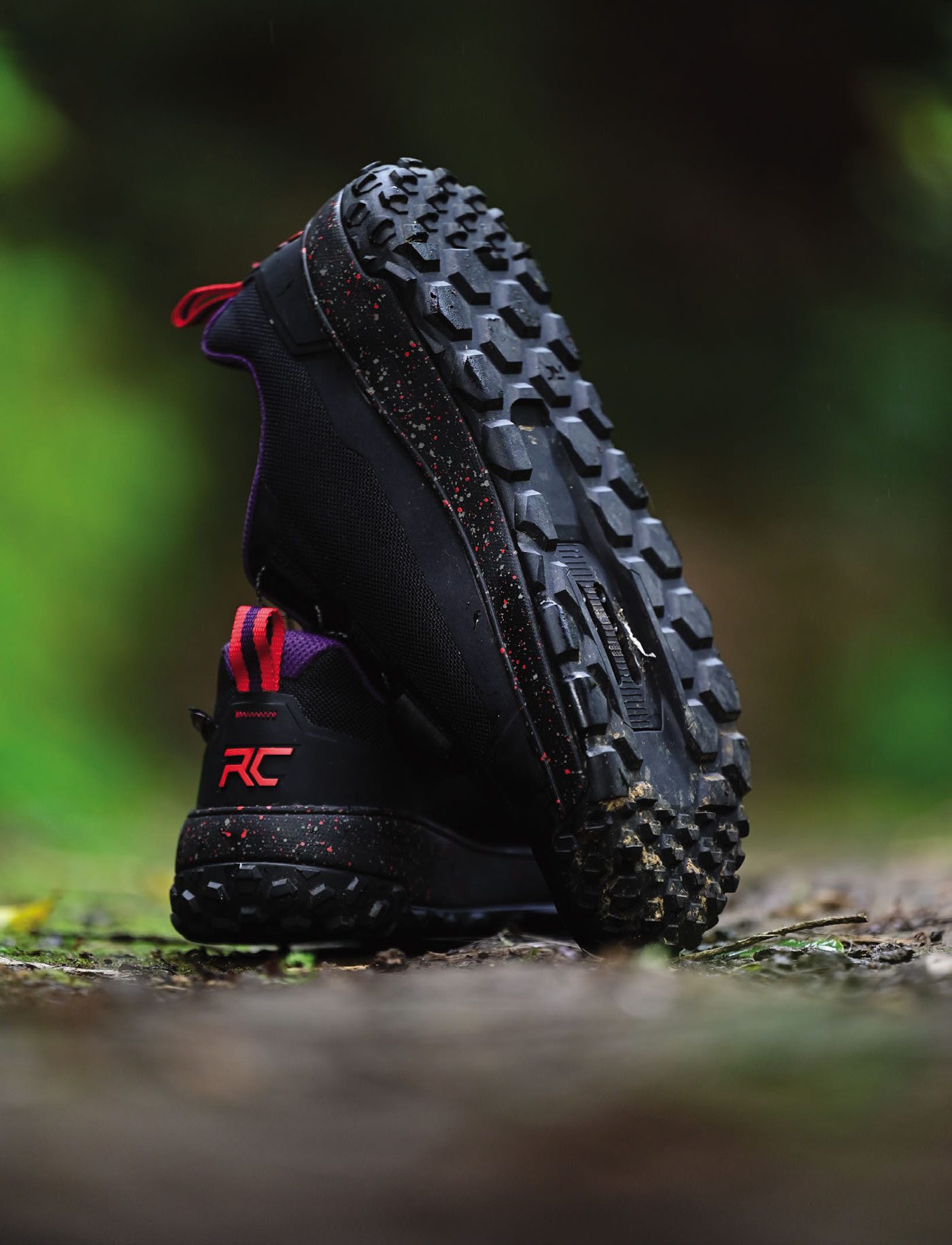
Despite their casual looks, these shoes are stiff. On RC’s in-house stiffness scale they describe the Tallac Clip as “Level 5 Flex, found only on our Clipless offerings, is very stiff – designed for ultimate power transfer and support for hard-charging riders”. By comparison, the flat version I also tested is on their scale at Level 4. That all seemed a bit strange to me, as the flat version is a lot more flexible. On my own personal scale; if my running shoes are a 1, and carbon XC race shoes are a 5, I would rank the Tallac flats around a 2.5, and these Tallac Clips about a 4.5. All that is to say that the clip and flat version are totalling different beasts despite sharing the same name and aesthetics. More on that soon.
Underneath, these Tallac Clip’s also have a totally different tread pattern to the Tallac lace version. These are chunky – really chunky – massive hexagonal lugs cover the main portion of the sole with smaller notched hexagons on the toe and heel. It’s clear these shoes are designed to get plenty of grip if you ever have to walk in them. The midsole appears to be a similar thickness to the Tallac flat, and that is something I really liked about the flat version – it felt like a substantial and secure shoe that was a really good platform for walking around on. And yes, this proved true; walking up some greasy, wet clay uphills I was impressed with the great traction they provided. If I was thinking about a ride that might have significant hike-a-bike, these would be worth considering for that alone. I also liked the way the toe grip extended up around the front toe box, providing additional impact protection and durability to a part of the shoe that can get a bit of a battering. The toe box is super solid and offers a high level of protection.
But all that chunky grip did have a drawback. Most notable was that with my Shimano cleat in my preferred most rearward position, in the slotted cleat bed, I simply couldn’t clip into my XTR trail pedals. I can only assume the tread was simply too thick and was preventing the right amount of cleat sitting proud enough to engage the pedal mechanism. I experimented with sliding it incrementally forward, but it wasn’t until it was more or less in the middle position of the slot that I was able to get easy and consistent ‘clipping in’. This was pretty frustrating, and seems like a massive oversight as most people I know prefer to run their cleats in the rearward position – certainly the enduro-gravity oriented crowd that I think these shoes are aimed at. (NB: After googling this, I see Shimano do in fact sell cleat spacers to raise the profile of your cleat – something I’ve never needed before, and never even knew existed, but would perhaps solve the problem?)
Sadly though, as much as I wanted to love these shoes, as good as they felt on, and as much as I loved the BOA system, and as much as I loved the look, for some reason they just didn’t agree with my feet. About half an hour into a ride, the widest part of my left foot would consistently suffer pain and numbness. This was surprising as it didn’t happen with the flat version, so maybe there is something about the stiffness of these clip versions that is just ‘too much’ for my feet? Or maybe there is something about not being able to get the cleat to work in the most rearward position? I’m not sure. After the first ride I thought, ‘hmm, I’m sure this will solve itself once I’ve broken them in a bit more and they have moulded to my feet a bit more’, but even after 20-odd rides it was still the same. Possibly the Level 5 stiffness means they just won’t form to my feet that much. In the end – and to quote bad relationship break-up lines – it was a ‘it’s not you, it’s me’ kind of deal with the RC Tallac Clip. Maybe they are just fractionally narrow for me? Maybe I’ve got a weird issue with my left foot that I wasn’t aware of? Maybe I’ve discovered something and need to see a podiatrist? RC do describe these as a mid-volume shoe on their website and say you may want to consider sizing up half a size. I didn’t get the chance to do that, which would be interesting, but I’d also be nervous to feel too loose in the rest of the shoe as I really like the general fit at my normal EU44 size. I still really like the shoe in principle; I like it enough to persist with it for a bit longer – even after this review goes to print – in the hope that it does in fact mould to my foot just that little bit more. It’s clearly a high-end shoe made with premium materials, which means I would expect it to be extremely durable over the long term and I think it will be a winner for lots of people, so it’s still worth checking out. But, I would also say, if you’re just on the fence about which size to go for, going up might be the right call.
